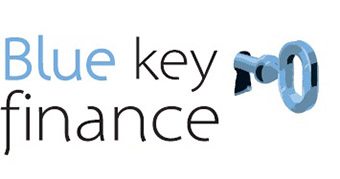Home loan myths busted
On a major commitment like a home loan, knowing the facts is the key to making the right decision. At Blue Key Finance we like to empower our clients with knowledge and facts and to minimise home loan myths so they feel comfortable knowing their own decision will be the right one.
Home loan myths 1: A cheap home loan is better than a premium one
At present, February 15 2016, for a $250,000 mortgage, you can select a no frills variable rate product for as low as 4.08% through one of our panel of lenders and only pay a one off $250 bank set up fee.
At the top end of the scale are “premium” loans which offer all the bells and whistles, like a fee free credit card, a fee free savings account with an offset feature, and discounts off home insurance for example. On a $250,000 mortgage, you can get a premium home loan on a variable rate for 4.08% but pay an annual fee of $375. Having the offset feature sounds great but is really only beneficial with people who can save substantially during any 12 month period, or for those who have multiple properties.
Myth 2: You need at least 20% of the purchase price as a down payment
Having a deposit worth more than 20% of a property’s value PLUS a little more to cover the stamp duty and bank fees (which really then becomes almost 25%) will mean avoiding lender’s mortgage insurance, which protects the lender, not you, in the event that you cannot keep up with the repayments—and it’s a saving that can be worth anywhere from $3,000 to $30,000 depending on the loan size and your LVR.
Banks will generally lend up to a 95% LVR (this means you should aim for a 10% deposit) and allow you to add on the cost of their mortgage insurance premium which would then take your LVR to around 97—98%.
Myth 3: In the long run you’re better off not to lock in
As a rule, borrowers are more likely to save over the long run by staying with a variable rate. However there are points in time when it can be beneficial to fix, and with fix rates as low as 3.89% as at February 2016, it is worth considering if not for the rate but for certainty of repayment.
Having your mortgage split between fixed and variable rates are becoming more popular today.
Myth 4: Weekly repayments are better than monthly
Not necessarily. Home loan myths like this one depends on the way your lender calculates “weekly” payments.
Let’s say your monthly repayments are $2,400—or $28,800 in a single year. On the basis, some lenders will calculate the weekly payment at $600 ($2,400 divided by four weeks). As there are 52 weeks in a year, your loan repayments will total $31,200 over a 12 month period, meaning you have made an extra month’s loan payment without too much impact on your budget.
However, some lenders calculate weekly payments differently—such as the total annual repayment divided by 52 weeks. This would make the weekly repayment $553.85 ($28,800 divided by 52 weeks), so paying off your loan weekly in this case won’t necessarily put you in front.
Myth 5: Mortgage offset is better than redraw
Redraw lets you withdraw any extra repayments made on your loan. Mortgage offset involves having a separate savings or transaction account that is linked to your home loan. The balance of the linked account is deducted from, or offset against, the value of your mortgage when interest is calculated. If you have a loan of $400,000, for example, and the balance of the linked account is $10,000, the interest charge will be based on a loan balance of $390,000.
In principle, both offset and redraw have the same impact. Bear in mind that opting for an offset account product will incur, in the majority of case, yearly bank fees of about $400.
Your style of debt management can also affect the choice between redraw and offset. People who love to watch their savings grow may prefer an offset account. Those who prefer to see their debt reduce may prefer a redraw facility.
Myth 6: The rate must drop by 0.4% to make refinancing worthwhile
On a mortgage of $300,000 this would save you about $1,200 each year and would on average at least help you recoup the costs of leaving your current bank and joining the new bank after the first six months.
But you should not just look at rate, but also having the right product that suits you today and into the short term future. Furthermore, it may be better to go for a lender with a consistent track record of competitive interest rates.
Myth 7: Pre-qualification the same as a pre-approval
Pre-qualification simply means a broker or lender says ‘yes’ over the phone. The Broker may not have looked at your supporting documents (pay slips etc.) to ensure you qualify for a loan. By contract, a pre-approval is only granted when your application has been fully assessed by your chosen lender and a letter provided to you for some comfort.
Myth 8: No one has a mortgage for 25 years
Gone are the days when we stayed with one loan and lender for a full 25 year term. Thank goodness! A home owner can choose from a selection of loans offering increasingly innovative features and better value fees. The ban on exit fees on new loans taken after July 1 2011 has provided even more of an incentive to review your loan every few years—or ask us to provide you with a finance health check, to make sure you’re on track with the loan that’s right for your needs and the repayment strategy that will see you become mortgage free a lot sooner.
If you have any more home loan myths you’d like to share please comment.
If you haven’t already, click here to download our FREE E-Book on “Refinancing”or email us instead and we’ll end it to you within 24 hours.




Leave a Reply
Want to join the discussion?Feel free to contribute!